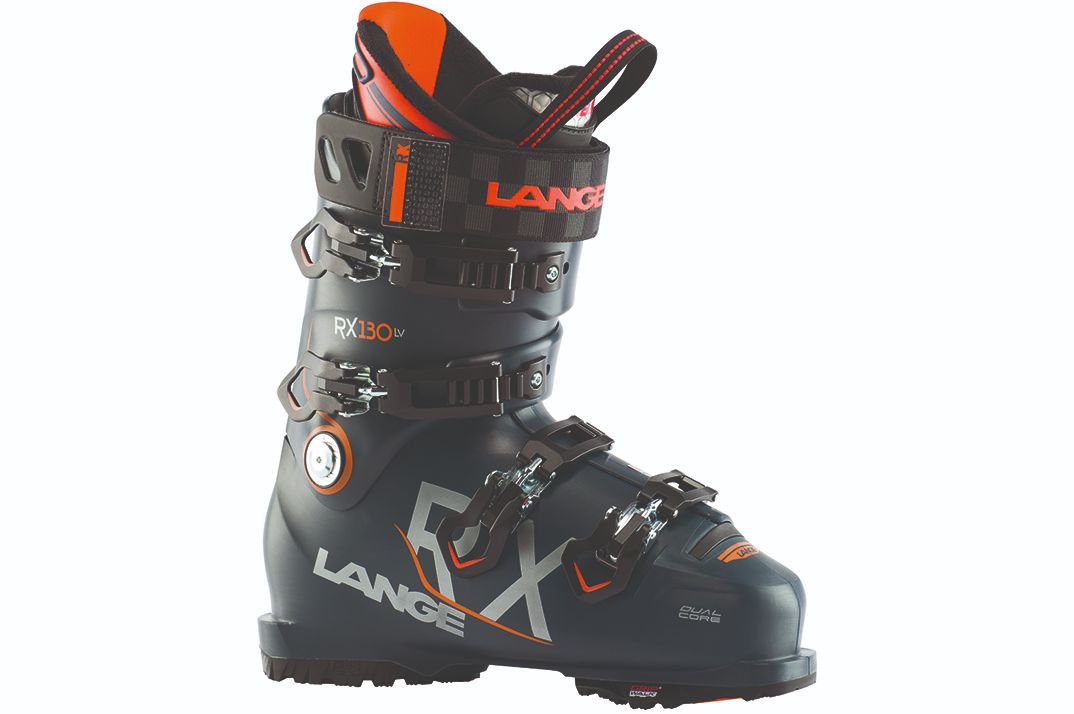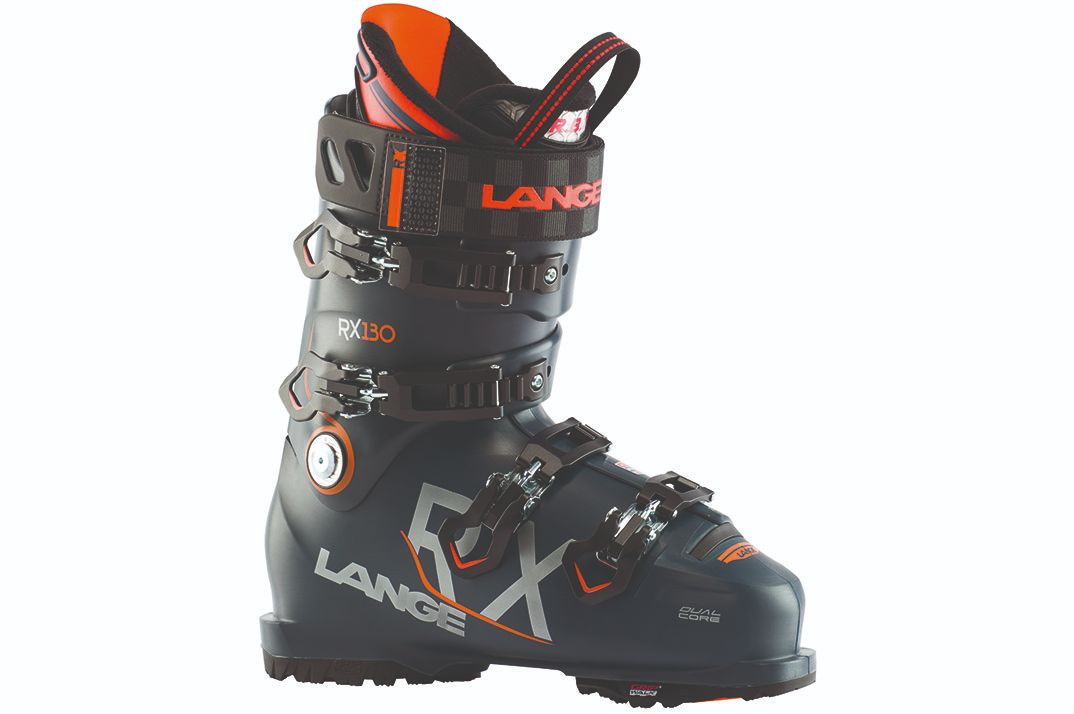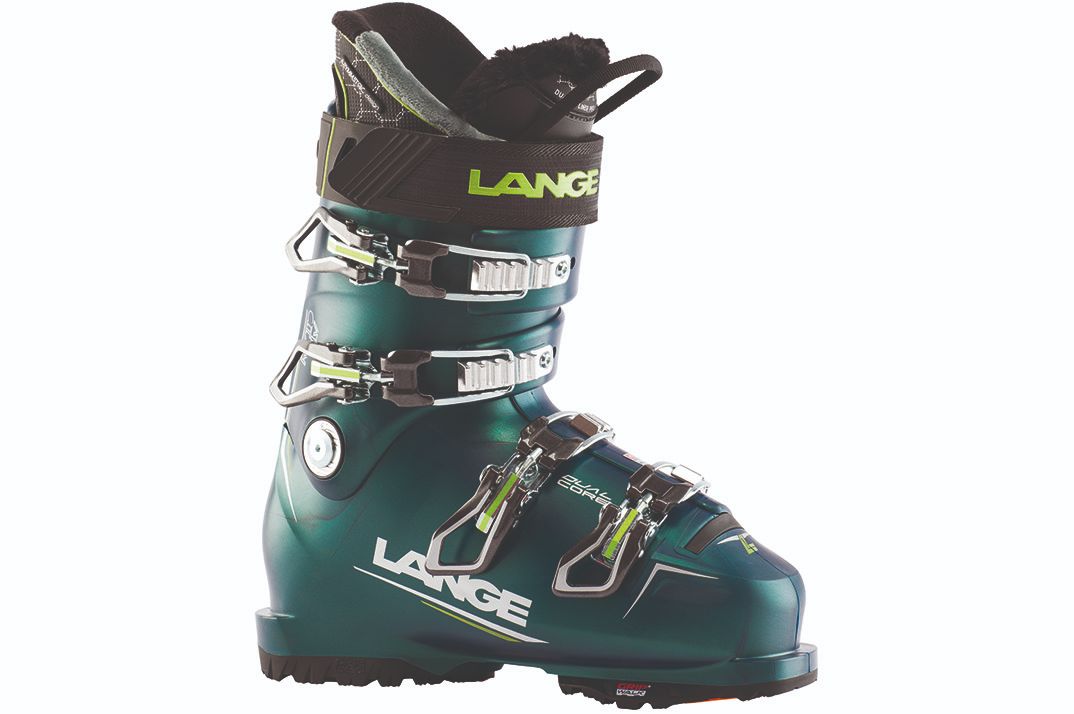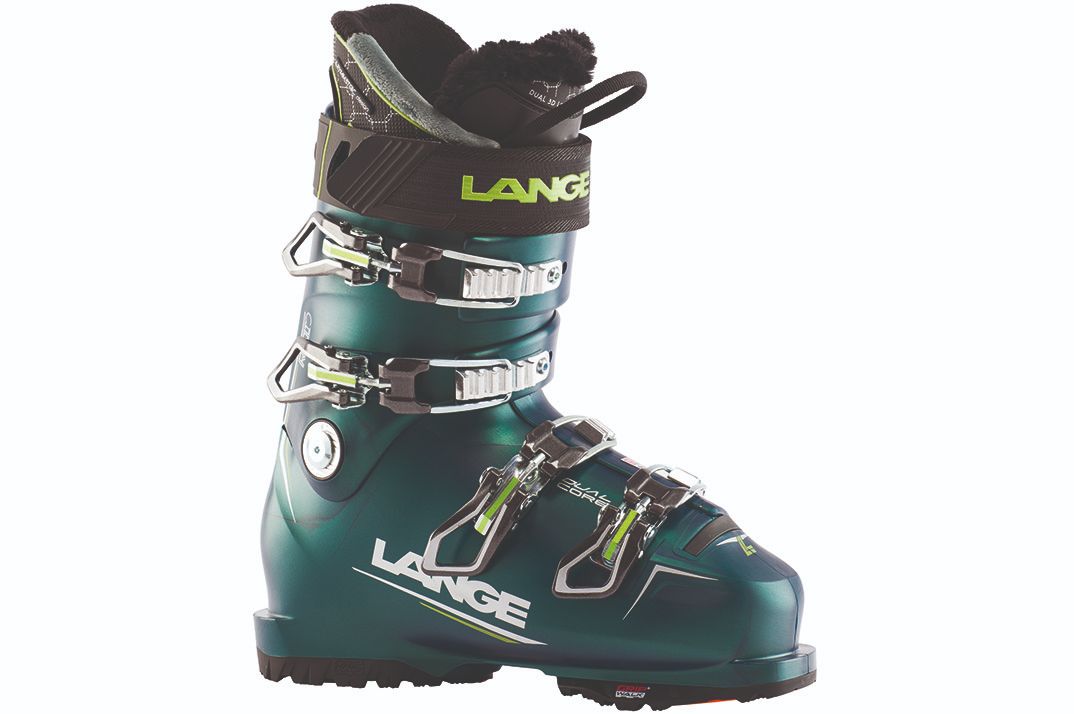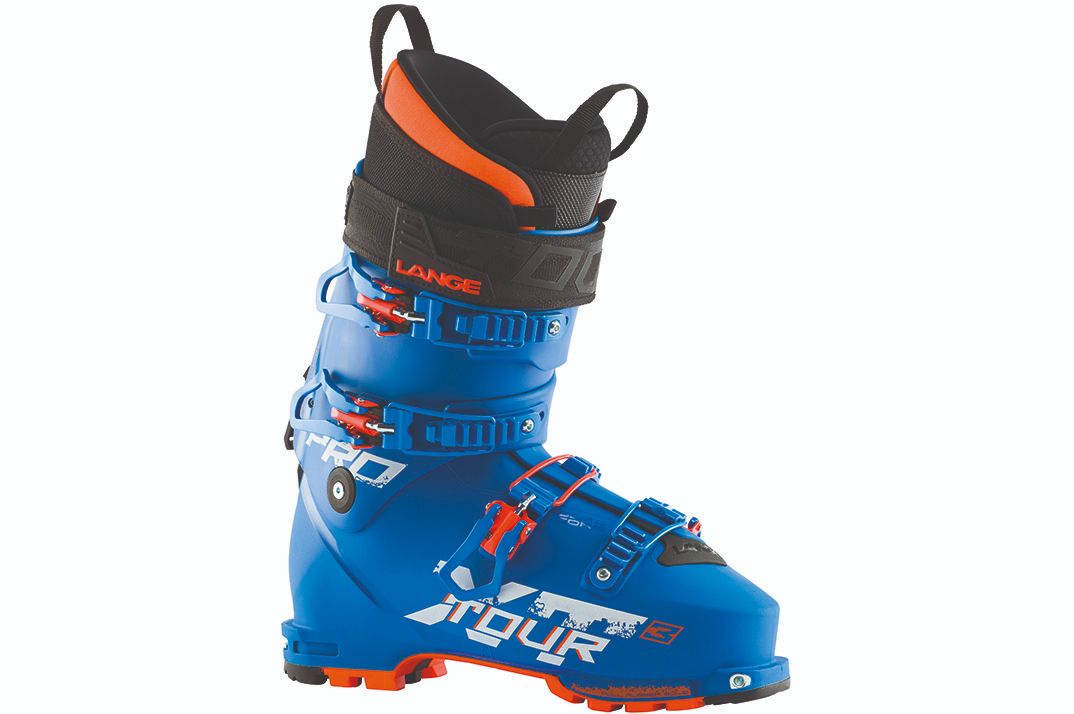Lange has traveled a long way as a brand without ever leaving home. The motherland for Lange lies between the boundaries indicated by the start and finish of a World Cup race. The plastic boot that truly revolutionized modern Alpine design, Lange long ago established the template not just for its own future lines, but for the entire market. To put it more plainly, it’s the most imitated boot ever.
Lange’s commitment to the classic, 4-buckle overlap shell is evident up, down and across its 2022 product line. Every model but the XT3 and new XT3 Tour is built on essentially the same foundation, whether for a race or recreational application, for men or for women and regardless of last volume (i.e., narrow, medium or wide). Lange has dropped at least 3 or 4 lines (I lost count) of hike-mode (HM) boots since the 2016/17 season, a slot now filled by the XT3 and XT3 Tour, the first models in Lange’s history that don’t borrow everything but a hike mode from an Alpine template.
No brand with a legacy as long as Lange’s has an unblemished record, and on the rare occasions when it strayed from its roots it made some serious faux pas, such as an hilariously bad rear-entry that it tossed together to demonstrate its disdain for the whole idea. But even when distracted by trend chasing, Lange never stopped making – and insisting on the unparalleled performance of – its classic race design. It doesn’t take a forensic scientist to discern the similarities between any Lange RS of yore and its current incarnation.
But that doesn’t mean Lange hasn’t tinkered with its flagship. Four years ago, it changed how it molded its shells and cuffs, using two different durometers of PU and/or PE co-injected via 5 ports. This creates a sandwich construction called Dual Core that allows the plastic to be softer and more pliable in zones where elasticity is desirable (as in over the instep), and still stiff as a brick through the spine and sole.
This may sound like technical trivia, but lifelong Lange fans remember just how brutal it can be to try to pry off (note the “try”) a well-chilled Lange. Dual Core makes it possible to both put on and take off a pair of Lange RS 130’s without using the Jaws of Life. I know some of you still don’t believe me, so I’ll repeat it: all Lange Alpine boots are now as easy to don and doff as any other 4-buckle, overlap shell.
The nouveauté of 2019, Dual Core Light, injected ultralight Grilamid® and polyolefin instead of PU/PE into a plastic sandwich. Dual Core Light was created to make the now retired XT Free boots more competitive in the weight-sensitive AT market, but two resort models, Superleggera (100mm last) and Superleggera LV (97mm last), available in both men’s (120 flex) and women’s (110), put an Alpine sole on a Dual Core Light frame so in-resort skiers can catch the Lighter is Better wave
The big news at Lange last season – literally and figuratively – was a new line of wide-bodies that replaced the SX series. The LX design is the latest example of a trend towards building real performance into high-volume models, traditionally the unhappy home of mush buckets. The LX series has the same hierarchy of flexes found in boots made for the medium-sized masses, matched to a corresponding pecking order of thermoformable, 3D liners.
Lange is to be commended for having the most coherent, consistent line of Alpine boots on the market, even if the alphabet soup of model names can be confusing at first. The challenge for Lange has always been how to be innovative (or at least appear to), without screwing up what it does best. Solving this ever-present riddle falls to someone in whom we have the highest confidence, Thor Verdonk, tapped three years ago to lead Lange after many years of exemplary service for Lange and Rossignol in the U.S.
It’s hard to imagine Lange moving away from its foundational, 2-piece, 4-buckle shells, which due to their seniority seem as integral to the ski environment as snow. Driven by the surge of interest in backcountry skiing, last season Lange moved as far from its home base as it’s ever ventured with the hybrid, hike-mode XT3. Yet even this AT boot remains at heart a race-bred Lange, with a narrow, 97mm last and a flex range that runs all the way up to 140. Even when Lange heads to the backcountry, it can’t leave it racing roots behind. If it did, it wouldn’t be a Lange.
Lange has traveled a long way as a brand without ever leaving home. The motherland for Lange lies between the boundaries indicated by the start and finish of a World Cup race. The plastic boot that truly revolutionized modern Alpine design, Lange long ago established the template not just for its own future lines, but for the entire market. To put it more plainly, it’s the most imitated boot ever.
Lange’s commitment to the classic, 4-buckle overlap shell is evident up, down and across its 2022 product line. Every model but the XT3 and new XT3 Tour is built on essentially the same foundation, whether for a race or recreational application, for men or for women and regardless of last volume (i.e., narrow, medium or wide). Lange has dropped at least 3 or 4 lines (I lost count) of hike-mode (HM) boots since the 2016/17 season, a slot now filled by the XT3 and XT3 Tour, the first models in Lange’s history that don’t borrow everything but a hike mode from an Alpine template.
No brand with a legacy as long as Lange’s has an unblemished record, and on the rare occasions when it strayed from its roots it made some serious faux pas, such as an hilariously bad rear-entry that it tossed together to demonstrate its disdain for the whole idea. But even when distracted by trend chasing, Lange never stopped making – and insisting on the unparalleled performance of – its classic race design. It doesn’t take a forensic scientist to discern the similarities between any Lange RS of yore and its current incarnation.
But that doesn’t mean Lange hasn’t tinkered with its flagship. Four years ago, it changed how it molded its shells and cuffs, using two different durometers of PU and/or PE co-injected via 5 ports. This creates a sandwich construction called Dual Core that allows the plastic to be softer and more pliable in zones where elasticity is desirable (as in over the instep), and still stiff as a brick through the spine and sole.
This may sound like technical trivia, but lifelong Lange fans remember just how brutal it can be to try to pry off (note the “try”) a well-chilled Lange. Dual Core makes it possible to both put on and take off a pair of Lange RS 130’s without using the Jaws of Life. I know some of you still don’t believe me, so I’ll repeat it: all Lange Alpine boots are now as easy to don and doff as any other 4-buckle, overlap shell.
The nouveauté of 2019, Dual Core Light, injected ultralight Grilamid® and polyolefin instead of PU/PE into a plastic sandwich. Dual Core Light was created to make the now retired XT Free boots more competitive in the weight-sensitive AT market, but two resort models, Superleggera (100mm last) and Superleggera LV (97mm last), available in both men’s (120 flex) and women’s (110), put an Alpine sole on a Dual Core Light frame so in-resort skiers can catch the Lighter is Better wave.
The big news at Lange last season – literally and figuratively – was a new line of wide-bodies that replaced the SX series. The LX design is the latest example of a trend towards building real performance into high-volume models, traditionally the unhappy home of mush buckets. The LX series has the same hierarchy of flexes found in boots made for the medium-sized masses, matched to a corresponding pecking order of thermoformable, 3D liners.
Lange is to be commended for having the most coherent, consistent line of Alpine boots on the market, even if the alphabet soup of model names can be confusing at first. The challenge for Lange has always been how to be innovative (or at least appear to), without screwing up what it does best. Solving this ever-present riddle falls to someone in whom we have the highest confidence, Thor Verdonk, tapped three years ago to lead Lange after many years of exemplary service for Lange and Rossignol in the U.S.
It’s hard to imagine Lange moving away from its foundational, 2-piece, 4-buckle shells, which due to their seniority seem as integral to the ski environment as snow. Driven by the surge of interest in backcountry skiing, last season Lange moved as far from its home base as it’s ever ventured with the hybrid, hike-mode XT3. Yet even this AT boot remains at heart a race-bred Lange, with a narrow, 97mm last and a flex range that runs all the way up to 140. Even when Lange heads to the backcountry, it can’t leave it racing roots behind. If it did, it wouldn’t be a Lange.
Lange extended its range in the backcountry market this year, taking the last step by putting a full-on, toe-to-heel Vibram®, ISO 9523, rockered sole on a 99mm, XT3 chassis. Both the XT3 Tour Pro (130 flex) and XT3 Tour Sport (110) have both a rockered shell footbed and outer sole, metal-to-metal Hike Mode connection, Dual Core Light construction (Grilamid® shells with PP cuffs) and a 53o total range of motion in hike mode.

